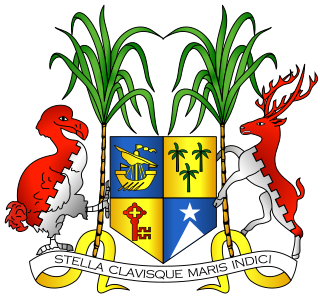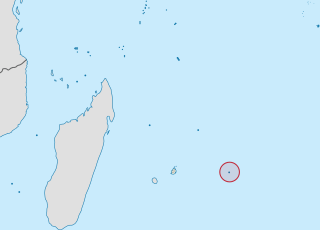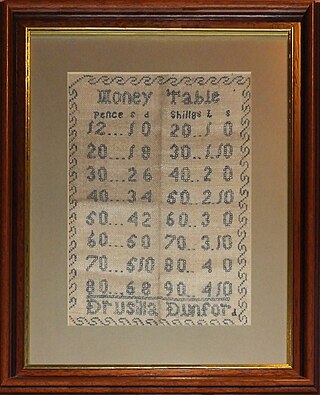Related Research Articles

Mauritius, officially the Republic of Mauritius, is an island country in the Indian Ocean, about 2,000 kilometres off the southeastern coast of East Africa, east of Madagascar. It includes the main island, as well as Rodrigues, Agaléga, and St. Brandon. The island of Mauritius along with nearby Réunion, are part of the Mascarene Islands. The main island of Mauritius, where the population is concentrated, hosts the capital and largest city, Port Louis. The country spans 2,040 square kilometres (790 sq mi) and has an exclusive economic zone covering 2,300,000 square kilometres.

Politics of Mauritius takes place in a framework of a parliamentary democracy. The separation of powers is among the three branches of the Government of Mauritius, namely the legislative, the executive and the Judiciary, is embedded in the Constitution of Mauritius. Being a Westminster system of government, Mauritius's unicameral house of parliament officially, the National Assembly, is supreme. It elects the President and the Prime Minister. While the President is voted by a single majority of votes in the house, the Prime Minister is the MP who supports a majority in the house. The President is the Head of State while the prime minister has full executive power and is the Head of Government who is assisted by a council of Ministers. Mauritius has a multi-party system. The Economist Intelligence Unit rated Mauritius a "full democracy" in 2022.

Transportation in Mauritius is characterized by the network of roadways, ports, and airports. The island was originally only accessible by boat until 1922, when the first flight landed in Mauritius.

Port Louis is the capital city of Mauritius. It is mainly located in the Port Louis District, with a small western part in the Black River District. Port Louis is the country's financial and political centre, and the most populous city. It is administered by the Municipal City Council of Port Louis. According to the 2018 census conducted by Statistics Mauritius, the population was 147,066.

Rodrigues is a 108 km2 (42 sq mi) autonomous outer island of the Republic of Mauritius in the Indian Ocean, about 560 km (350 mi) east of Mauritius. It is part of the Mascarene Islands, which include Mauritius and Réunion. Like Agaléga, Rodrigues is a constituent island of the Republic of Mauritius, under the Constitution of Mauritius and still remains, as explicitly defined by the same Constitution, part of the Sovereignty of Mauritius, together with the following islands: "Agalega, Tromelin, Cargados Carajos, Chagos Archipelago ... Diego Garcia and other islands included in the State of Mauritius".

£sd, spoken as "pounds, shillings and pence", is the popular name for the pre-decimal currencies once common throughout Europe. The abbreviation originates from the Latin currency denominations librae, solidi, and denarii. In the United Kingdom, these were referred to as pounds, shillings, and pence.

Hinduism came to Mauritius when Indians were brought as indentured labour to colonial French and later in much larger numbers to British plantations in Mauritius and neighboring islands of the Indian Ocean. The migrants came primarily from what are now the Indian states of Bihar, Uttar Pradesh, Madhya Pradesh, Jharkhand, Maharashtra, Tamil Nadu, Telangana and Andhra Pradesh, with another influx of migrants from the Sindh region of Pakistan, following the Partition of India.
An arpent is a unit of length and a unit of area. It is a pre-metric French unit based on the Roman actus. It is used in Quebec, some areas of the United States that were part of French Louisiana, and in Mauritius and the Seychelles.
In 1820, in response to a request from the British colony of Mauritius, the imperial government in London struck silver coins in the denominations of 1⁄4, 1⁄8, and 1⁄16 dollars. The dollar unit in question was equivalent to the Spanish dollar and these fractional coins were known as 'Anchor Dollars' because of the anchor that appeared on them. More of these anchor dollars were struck in 1822 and not only for Mauritius but also for the British West Indies. In addition to this, a 1⁄2 dollar anchor coin was struck for Mauritius. A year or two later, copper dollar fractions were struck for Mauritius, the British West Indies, and Sierra Leone.

The cash was a currency denomination used in China in imperial times. It was the chief denomination until the introduction of the yuan in the late 19th century.

Mauritians are nationals or natives of the Republic of Mauritius and their descendants. Mauritius is a multi-ethnic society, with notable groups of people of South Asian, Sub-Saharan African, European, and Chinese descent, as well as those of a mixed background from any combination of the aforementioned ethnic groups.
Cash is a name for several historical currencies used in Asia. It is applied to units used in China, Vietnam, and of Madras and Princely state of Travancore in British India. It is also occasionally used to refer to the Korean mun and the Japanese mon.
The Indian indenture system was a system of indentured servitude, by which more than 1.6 million workers from British India were transported to labour in European colonies, as a substitute for slave labor, following the abolition of the trade in the early 19th century. The system expanded after the abolition of slavery in the British Empire in 1833, in the French colonies in 1848, and in the Dutch Empire in 1863. British Indian indentureship lasted till the 1920s. This resulted in the development of a large South Asian diaspora in the Caribbean, Natal, East Africa, Réunion, Mauritius, Sri Lanka, Malaysia, Myanmar, and Fiji, as well as the growth of Indo-Caribbean, Indo-African, Indo-Mauritian, Indo-Fijian, Indo-Malaysian, and Indo-Singaporean populations.

The British Indian Ocean Territory (BIOT) is an Overseas Territory of the United Kingdom situated in the Indian Ocean, halfway between Tanzania and Indonesia. The territory comprises the seven atolls of the Chagos Archipelago with over 1,000 individual islands, many very small, amounting to a total land area of 60 square kilometres. The largest and most southerly island is Diego Garcia, 27 square kilometres, the site of a Joint Military Facility of the United Kingdom and the United States. Official administration is remote from London, though the local capital is often regarded as being on Diego Garcia.

According to the 2011 census, Christianity was adhered to by 31.7% of the population of Mauritius; 80.3% of these were Roman Catholics.

The Mauritius Police Force (MPF) is the national law enforcement agency of Mauritius. The MPF carries out police, security, and military functions on Mauritius, with about 12,500 police officers under the command of the Commissioner of Police. The MPF is part of the Home Affairs Division, which operates under the aegis of the Prime Minister's Office.

The Supreme Court of Mauritius is the highest court of Mauritius and the final court of appeal in the Mauritian judicial system. It was established in its current form in 1850, replacing the Cour d'Appel established in 1808 during the French administration and has a permanent seat in Port Louis. There is a right of appeal from the Supreme Court of Mauritius directly to the Judicial Committee of the Privy Council in London. The Judicial Committee of the Privy Council (JCPC) is the court of final appeal for Mauritius.
Several units of measurement were used in Seychelles to measure quantities like, for example, capacity. The metric system has been compulsory in Seychelles. Before metric adoption, old French, British and some additional units were used.

The Vietnamese văn as a denomination for Vietnamese cash coins was used from 1868 until 1945 during the reign of the Nguyễn dynasty. The inspiration to introduce the văn may have been to emulate the Chinese wén used on contemporary Qing dynasty cash coins which had just become a fiat currency, however unlike the Chinese system where all Chinese cash coins were cast from the same metals and the wén was the primary unit of account for coins made of the same metals, the Vietnamese system used the văn as a basic number currency symbol indicating how much zinc cash coins a brass or bronze cash coin was worth, the Vietnamese cash coins-based currency system used the mạch (陌) and quán (貫) as units of account that could be based on either zinc cash coins or copper-alloy cash coins depending on the region or context. It was continued to be used as a measurement for zinc cash coins when the French Indochinese piastre was introduced, after which the term still appeared on Vietnamese cash coins and represented a subdivision of copper-alloy cash coins rather than the piastre, this was known in French as the sapèque en zinc, as the production of zinc coinage was ceased by the Imperial government of the Nguyễn dynasty around the year 1871.

A string of cash coins refers to a historical Chinese, Japanese, Korean, Ryukyuan, and Vietnamese currency unit that was used as a superunit of the Chinese cash, Japanese mon, Korean mun, Ryukyuan mon, and Vietnamese văn currencies. The square hole in the middle of cash coins served to allow for them to be strung together in strings. The term would later also be used on banknotes and served there as a superunit of wén (文).
References
- 1 2 Washburn, E.W. (1926). International Critical Tables of Numerical Data, Physics, Chemistry and Technology. Vol. 1. New York: McGraw-Hill Book Company, Inc. p. 9. Retrieved 8 February 2015.
- ↑ Cardarelli, F. (2003). Encyclopaedia of Scientific Units, Weights and Measures. Their SI Equivalences and Origins . London: Springer. pp. 7. ISBN 978-1-4471-1122-1.